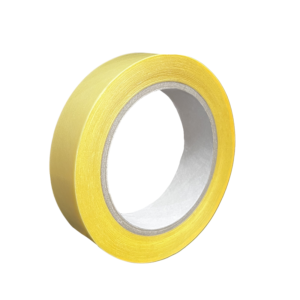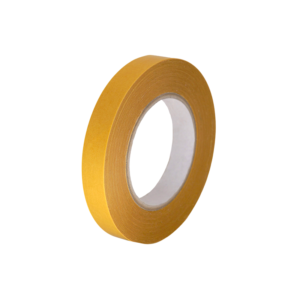Applications
- Coil wrapping
- Interlayer insulation of electrical motors and transformers
- Capacitors
- Anchoring, holding, harnessing etc.
Benefits
- Good adhesion and excellent tensile strength
- Very high breakdown voltage
- Good chemical and solvent resistance when thermoset
The Rolls should be stored in their packaging protected from light and at a temperature between 15°C to 24°C, with a relative humidity of 50% +/- 30%. When using an adhesive tape stored below 15°C, it is advisable to keep the tape at room temperature for 24 hours to preserve its characteristics.
| Manufacturer | Saint-Gobain / h-old® |
|---|---|
| Backing | PET Film |
| Backing Thickness | 0,050 mm |
| Adhesive Type | Natural Rubber, thermosetting |
| Total Thickness | 0,087 mm |
| Insulation Class | B 130°C (DIN EN 60085, OANZ2 & OANZ8) |
| Color | Black (04), Blue (11), Clear (00), Yellow (17) |
| Adhesion to Steel | 15,00 N/25 mm |
| Tensile Strength | 175,00 N/25 mm |
| Elongation at Break | 100% |
| Dielectric Strength | 7000 V |
| Electrolytic Corrosion | 1 |
| Rolling Ball Tack | < 15 cm |
| Temperature Resistance | +160°C, (short-term) |
| UL-File # | E178430 |
| Length | 66 m, other lengths upon request |
| Width | 6 mm, 9 mm, 12 mm, 15 mm, 19 mm, 25 mm, 30 mm, 38 mm, 50 mm, 1000 mm, other widths upon request |
| Storage Life | The material can be stored at room temperature for at least 12 months. |
Benefits
- Good adhesion and excellent tensile strength
- Very high breakdown voltage
- Good chemical and solvent resistance when thermoset



